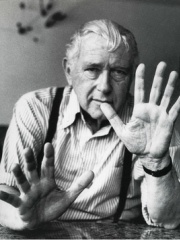
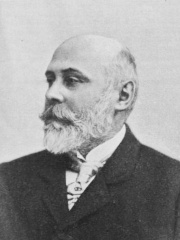
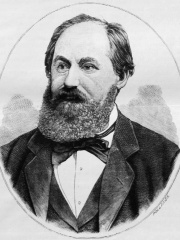
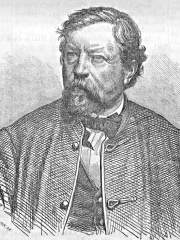
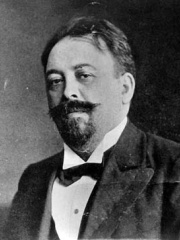
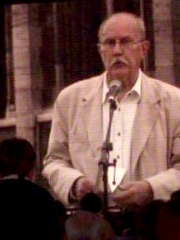

The Most Famous
ARCHITECTS from Hungary
This page contains a list of the greatest Hungarian Architects. The pantheon dataset contains 518 Architects, 8 of which were born in Hungary. This makes Hungary the birth place of the 18th most number of Architects behind Türkiye, and Belgium.
Top 8
The following people are considered by Pantheon to be the most legendary Hungarian Architects of all time. This list of famous Hungarian Architects is sorted by HPI (Historical Popularity Index), a metric that aggregates information on a biography's online popularity.

1. Marcel Breuer (1902 - 1981)
With an HPI of 71.86, Marcel Breuer is the most famous Hungarian Architect. His biography has been translated into 42 different languages on wikipedia.
Marcel Lajos Breuer ( BROY-ur; 21 May 1902 – 1 July 1981) was a Hungarian-American modernist architect and furniture designer. He moved to the United States in 1937 and became a naturalized American citizen in 1944. At the Bauhaus he designed the Wassily Chair and the Cesca Chair, which The New York Times have called some of the most important chairs of the 20th century. Breuer extended the sculpture vocabulary he had developed in the carpentry shop at the Bauhaus into a personal architecture that made him one of the world's most popular architects at the peak of 20th-century design. His work includes art museums, libraries, college buildings, office buildings, and residences. Many are in a Brutalist architecture style, including the former IBM Research and Development facility which was the birthplace of the first personal computer. He is regarded as one of the great innovators of modern furniture design and one of the most-influential exponents of the International Style.

2. Ödön Lechner (1845 - 1914)
With an HPI of 63.24, Ödön Lechner is the 2nd most famous Hungarian Architect. His biography has been translated into 21 different languages.
Ödön Lechner (born János Ödön Lechner; 27 August 1845 – 10 June 1914) was a Hungarian architect, one of the prime representatives of the Hungarian Szecesszió style, which was related to Art Nouveau in the rest of Europe, including the Vienna Secession. He is famous for decorating his buildings with Zsolnay tile patterns inspired by old Magyar and Turkic folk art, which are combined with modern materials such as iron. Lechner's work was submitted in 2008 for inclusion on the World Heritage List.

3. Imre Steindl (1839 - 1902)
With an HPI of 62.40, Imre Steindl is the 3rd most famous Hungarian Architect. His biography has been translated into 20 different languages.
Imre Ferenc Károly Steindl (29 October 1839 – 31 August 1902) was a Hungarian architect. Steindl (sometimes called in German Emerich Steindl or Emmerich Steindl) was the designer of the Hungarian Parliament Building, an associate professor and correspondent of the Hungarian Academy of Sciences. Around the end of the 19th century, along with Miklós Ybl and Frigyes Schulek, Steindl was the most significant architect within the lands of the Crown of Saint Stephen. His most famous work, the Hungarian Parliament Building (Országház) in Budapest, is regarded as a symbol of the capital city.

4. Miklós Ybl (1814 - 1891)
With an HPI of 60.83, Miklós Ybl is the 4th most famous Hungarian Architect. His biography has been translated into 26 different languages.
Miklós Ybl (6 April 1814 in Székesfehérvár – 22 January 1891 in Budapest) was one of Europe's leading architects in the mid to late nineteenth century as well as Hungary's most influential architect during his career. His most well-known work is the Hungarian State Opera House in Budapest (1875–84).
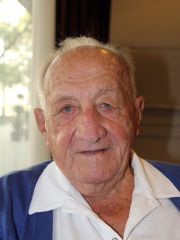
5. Sándor Tarics (1913 - 2016)
With an HPI of 59.56, Sándor Tarics is the 5th most famous Hungarian Architect. His biography has been translated into 25 different languages.
Sándor Tarics (23 September 1913 – 21 May 2016) was a Hungarian water polo player who won a gold medal in the 1936 Summer Olympics.

6. Lipót Baumhorn (1860 - 1932)
With an HPI of 58.46, Lipót Baumhorn is the 6th most famous Hungarian Architect. His biography has been translated into 17 different languages.
Lipót Baumhorn (Hungarian: Baumhorn Lipót, German: Leopold Baumhorn, 28 December 1860, Kisbér – 8 July 1932, Kisbér) was a Hungarian architect of Jewish heritage, the most influential Hungarian synagogue architect in the first half of the 20th century. He drew blueprints for about 20 synagogues in the Kingdom of Hungary.

7. Imre Makovecz (1935 - 2011)
With an HPI of 58.32, Imre Makovecz is the 7th most famous Hungarian Architect. His biography has been translated into 22 different languages.
Imre Makovecz (November 20, 1935 – September 27, 2011) was a Hungarian architect active in Europe from the late 1950s onward. Makovecz was born and died in Budapest. He attended the Technical University of Budapest. He was founder and "eternal and executive president" of the Hungarian Academy of Arts. He was an award-winning architect, having won Ybl Prize, Kossuth Prize, Steindl Imre Prize and Prima Primissima Award among many others. Makovecz was one of the most prominent proponents of organic architecture. As such, his buildings attempt to work with the natural surroundings rather than triumph over them. Frank Lloyd Wright and Rudolf Steiner are both strong influences, as is traditional Hungarian art. His work began as a critique of communist ideology and the brutal uniformity of system building, but after the fall of the Communist regime in 1989, it became a comment on the nature of globalisation and corporate culture. In its attempts to refer to and build on Hungarian national archetypes, Makovecz was continuing the work and ideas of the architects of Hungarian Art Nouveau and National Romanticism. The first English language monograph on his work, Imre Makovecz: The Wings of the Soul, by Edwin Heathcote, was published in 1997. More recently, his work has been examined in the broader context of Hungarian culture to which also belongs organic cinema. Makovecz was a devout Roman Catholic.

8. Ernő Goldfinger (1902 - 1987)
With an HPI of 55.90, Ernő Goldfinger is the 8th most famous Hungarian Architect. His biography has been translated into 19 different languages.
Ernő Goldfinger (11 September 1902 – 15 November 1987) was a Hungarian-born British architect and furniture designer. He moved to the United Kingdom in the 1930s, and became a key member of the Modernist architectural movement. He is most prominently remembered for designing residential tower blocks, some of which are now listed buildings.
People
Pantheon has 8 people classified as Hungarian architects born between 1814 and 1935. Of these 8, none of them are still alive today. The most famous deceased Hungarian architects include Marcel Breuer, Ödön Lechner, and Imre Steindl.
Deceased Hungarian Architects
Go to all RankingsMarcel Breuer
1902 - 1981
HPI: 71.86
Ödön Lechner
1845 - 1914
HPI: 63.24
Imre Steindl
1839 - 1902
HPI: 62.40
Miklós Ybl
1814 - 1891
HPI: 60.83
Sándor Tarics
1913 - 2016
HPI: 59.56
Lipót Baumhorn
1860 - 1932
HPI: 58.46
Imre Makovecz
1935 - 2011
HPI: 58.32
Ernő Goldfinger
1902 - 1987
HPI: 55.90
Overlapping Lives
Which Architects were alive at the same time? This visualization shows the lifespans of the 8 most globally memorable Architects since 1700.

